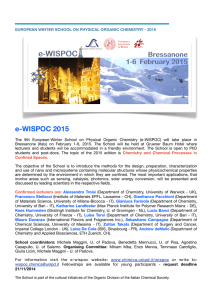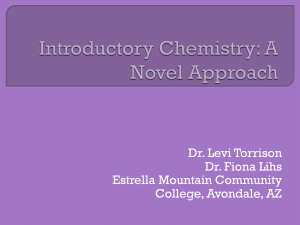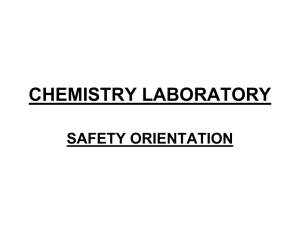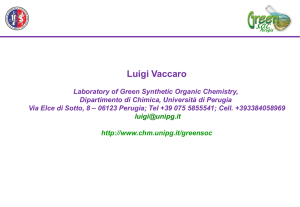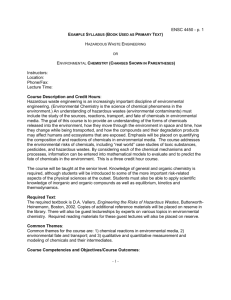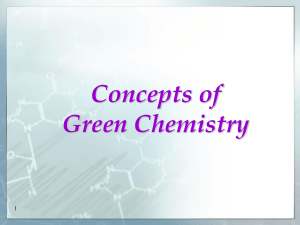Green chemistry and green economy
advertisement
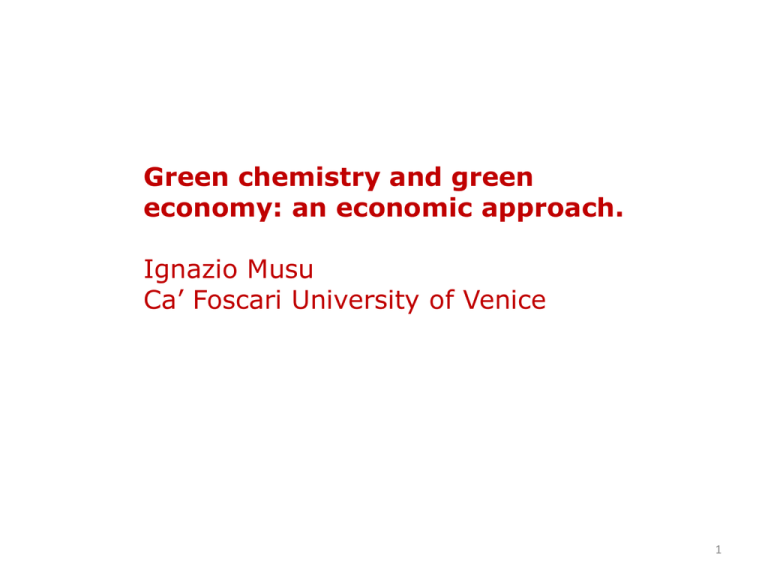
Green chemistry and green economy: an economic approach. Ignazio Musu Ca’ Foscari University of Venice 1 Green economy. Products, techniques and services are developed that promote a healthy environment and energy security. Green economy is not against economic growth. Integration is obtained through: • promoting a greener structure of demand; • promoting an environment friendly technological progress 2 Three pillars of a strategy for a green economy: • sound environmental regulation (not only command and control; price incentives: taxes on pollution and cap and trade systems) • environment oriented technology policy (R&D subsidies, partially supported by environmental taxes’ revenues and revenues from auctioned pollution permits) • environmental responsibility of consumers and firms (voluntary agreements) 3 Crucial role of chemical industry: estimated to interact with almost all manufacturing activities. Customers sectors of chemicals industry Source: European Commission 4 Importance of green chemistry for a green economy. Green chemistry takes a life cycle approach: it considers waste, safety, energy use and toxicity since the earliest stages of design and production in order to reduce the impact of final production, use and disposal. It involves directly or indirectly all aspects of the greening of an economy and all stages and types of production. Promoting green chemistry is fundamental in shaping a sustainable economic growth model. An example: climate change. Widening the feedstock base of chemical industry through bio-based renewable materials as replacement of fossil feedstocks. 5 Why public policies are required to promote a green chemistry. Traditional chemical industry implies significant external costs on consumers and users of chemical, particularly health costs. Risk and health costs of managing substances in the production process are also significant. The market is not spontaneously leading towards green chemistry because the perception dominates that imposing new standards on chemical industry would damage competitiveness. This is a short term view of the market performance: negative environmental costs reduce the market value of an average chemical firm. Experience shows that an appropriate regulation eventually support competitiveness. 6 Regulation for a green chemistry. Experience shows that regulation is based fundamentally on a “command and control” approach to dangerous chemicals. Crucial role of risk assessment. Toxic Substance Control Act (TSCA) in the USA. Registration, Evaluation and Authorization of Chemicals (REACH) and Classification, Labelling and Packaging of Sustances and Mixtures (CLP) in Europe. REACH more successful than TASCA in terms of adequate testing of existing and new products because in Europe the burden of testing has been shifted from the state to industry (involving producers and downstream users). Although REACH aims to be a step towards voluntary agreements, it contains procedures of monitoring, authorization and prohibition. 7 How to promote green chemistry innovation. Unanimous request for an active policy to promote green chemistry oriented. Some aspects of this policy are costless: • favoring procedures for a better protection of intellectual property rights in the area of green chemistry; • green oriented public procurement; • at an international level: giving trade reform a greener orientation. Other aspects are costly: • subsidies to R&D in green chemistry, particularly in SMEs; • supporting programs of international technological cooperation. 8 How to deal with costly measures: • reducing perverse subsidies to traditional polluting chemical processes and products, • imposing traditional polluting chemical processes and products a price (charge) possibly connected to the value of the environmental damage seems necessary. Command and control should be integrated to an increased use of price incentives. Society’s environmental responsibility may be a powerful driver of this change of strategy. More entrepreneurs should be convinced of the medium term advantage of a green chemistry choice. Importance of education for final consumers . 9





